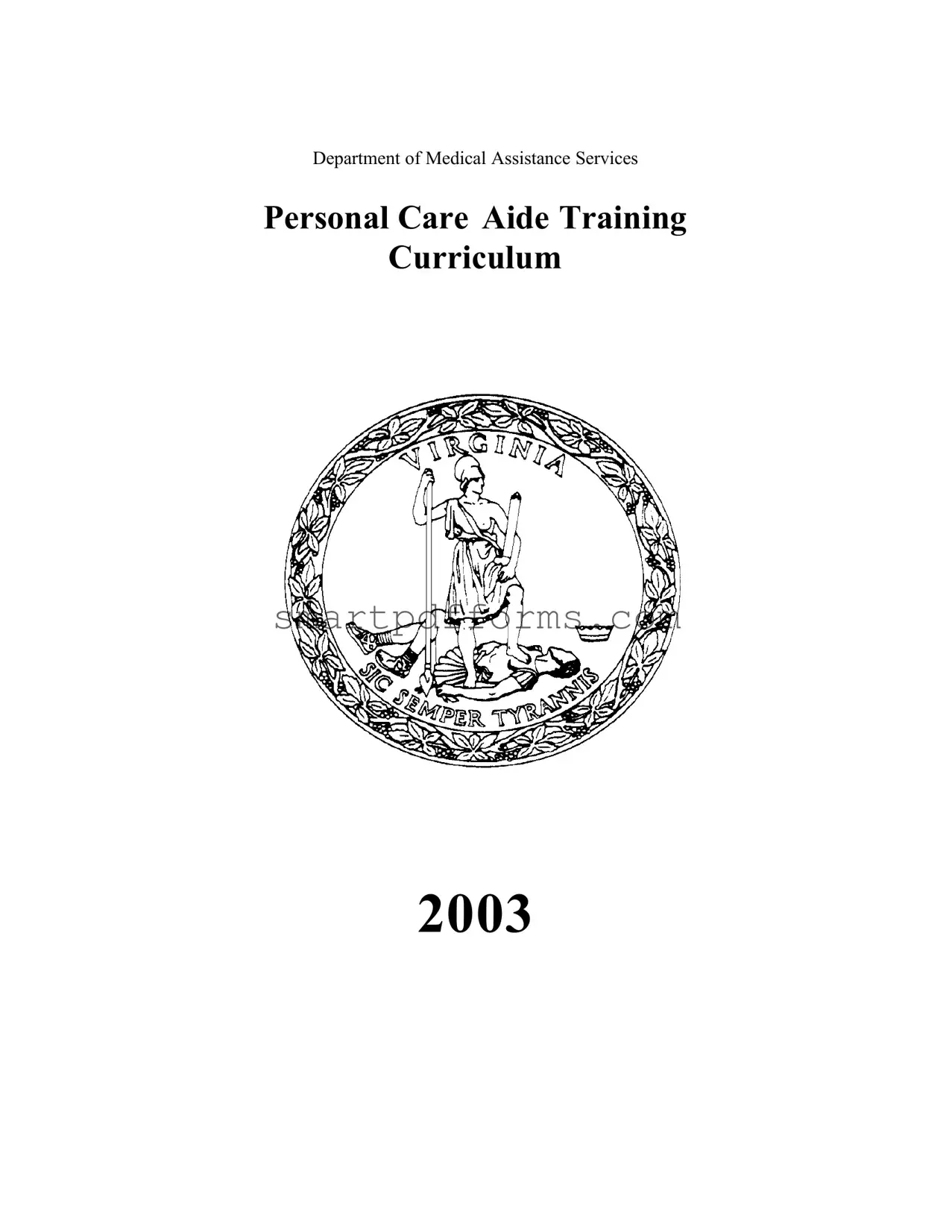The Department of Medical Assistance Services
PERSONAL CARE AIDE CURRICULUM
B.Psychological Aspects of Aging
1.There are many factors that contribute to the psychological aspects of aging. These include, loss of income, loss of home, loss of independence, loss of spouse, illness or disease, loss of sense of security, and the loss of trust.
2.There are numerous behaviors due to psychological factors. These include, poor appetite, depression, anger, and insomnia.
C.Physical and Emotional Needs of the Elderly
1.Basic Human Needs:
a.Physiological needs-food, water, sleep, rest, physical activity, elimination, and oxygen10
b.Safety and security-safe and protected from harm in the environment10
c.Personal security in his or her family, relationships, and job. Financial security10
d.Love and belonging-give love and receive love from others. Show recipient you care and accept him or her, regardless of disability,
condition, appearance, or behavior. Provide privacy during care, treatments, and procedures, and respect the recipient’s dignity10
e.Self-esteem and respect-feel important and worthwhile; self-image may be threatened which may result in the recipient complaining
frequently. The threat to self-esteem may result in recipient reacting with anger10
f.Self-actualization-feeling a sense of accomplishment and success10
D.Critical Situations that the Personal/Respite Care Aide may be Involved
1.Verbally abusive – The PCA is in the home to give care, support, and understanding. He/she would not be in the home if the recipient did not need professional medical assistance. The PCA must always maintain professionalism, and never verbally attack the recipient.
2.Combative - The PCA is never, under any circumstances, to hit a recipient. Usually, if you leave the recipient alone for a few minutes and then return and greet him/her, as if it were the first time you had seen him/her that day, he/she may have calmed down.
3.Emergency - The PCA must be aware at all times of the recipient and what is happening with him/her. The recipient may stop breathing, have a heart attack, stroke, a diabetic complication, or other physical or psychological emergency. The PCA must be prepared with a plan of action in case of an emergency. Depending on the problem, the PCA should know when it is










